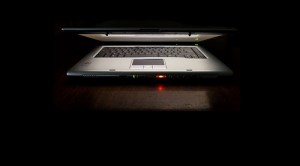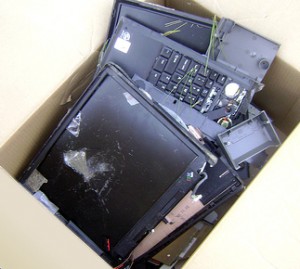How to Buy a New Computer: Part II Netbooks

Yesterday I discussed the basics of buying a new computer. The most important first step is figuring out what you need and what you want out of a new computer. There are three main types of portable computers available these days: netbooks, basic laptops, and high-end laptops. Today is all about “netbooks.” ((Photo courtesy of Ciccio Pizzettaro))
(Scroll to the end to see my picks…)
Netbooks
A netbook is a very small laptop designed to extremely mobile and portable. They are optimized for portability and wireless connectivity.
Netbooks typically have a display of 10″ or less. ((TV’s and monitors are always measured by the diagonal.)) They usually don’t have any CD or DVD drives. ((This means they’re no good for watching DVD’s or playing CD’s.)) They usually have very small solid state drives or mid-sized hard drives. On the plus side, they usually have bluetooth, media card readers, and WiFi. They’re typically between 2 to 3 pounds, depending upon brand and type of battery. They’re also relatively cheap – between $350 to $500.
My requirements may differ from yours. If I were to buy a netbook, I would want:
- Minimum 2 USB ports, preferably 3
- Minimum 100 GB hard drive
- 1 GB RAM
- Bluetooth
- WiFi aka 802.11a/b/g, and preferably also 802.11n
- Ethernet port
- Modem port
Other things people might care about (but I don’t):
- Webcam
- Keyboard size
- Monitor size
Keep in mind, I’ve never used any of these laptops – I’m just evaluating them based on their prices and my own opinions as to their respective brands and specs. Although, I’m enough of a nerd that I put together a spreadsheet to compare those five netbooks as well as about another dozen or so models and submodels. If anyone is interested in seeing the spreadsheet, mention it in the comments below or drop me a line.
Dell has a new netbook too, but it only has solid state drive options – which are too small to be of use to me. ((8 GB of hard drive space is barely enough to run an operating system and a few programs these days…)) However, I’m sure it would be perfect for some people.
My picks are, in rough order of preference:
- HP Mini Note 2133 – $497.80
- Samsung NC10 – $477.95
- Acer Aspire One – $370.99
- MSI Wind U120 – $429.99
- ASUS Eee PC 1000H – $382.00
If I were to buy a netbook today, I’d probably go for the Acer Aspire One. It occupies a sweet spot in terms of price, is a decent brand, and has very comparable specs to the higher-end models.
Next, basic laptops!

